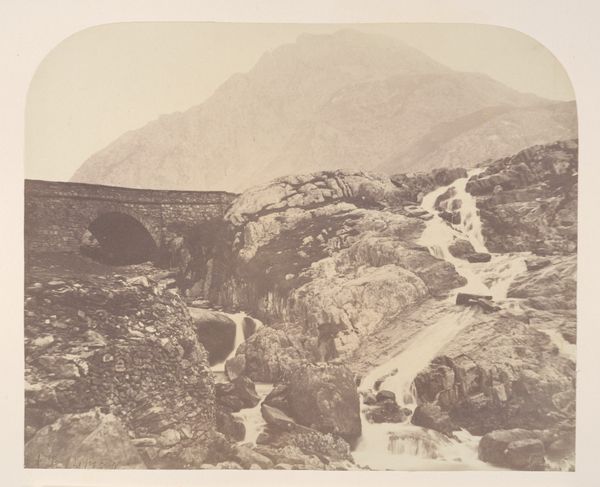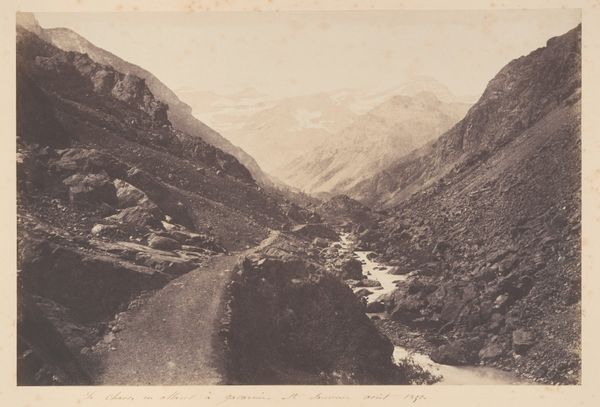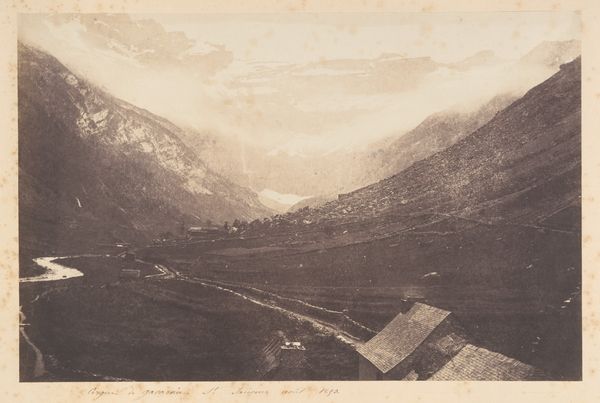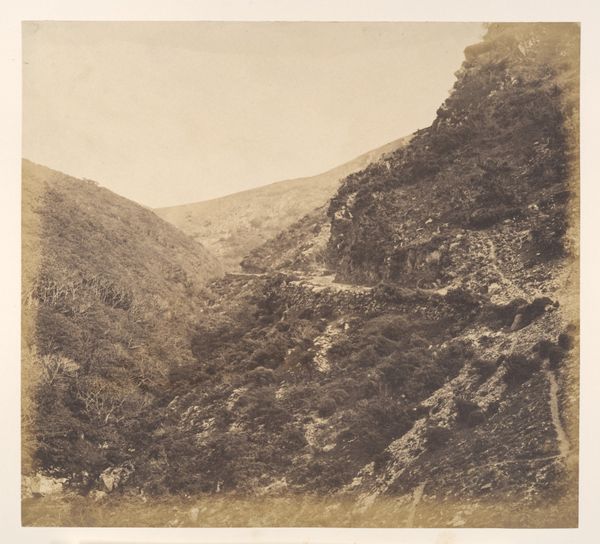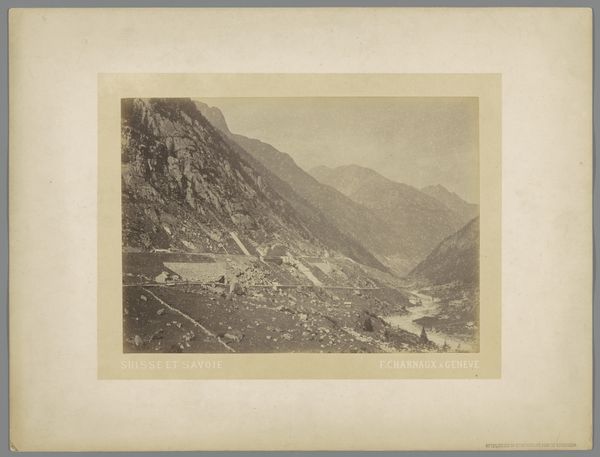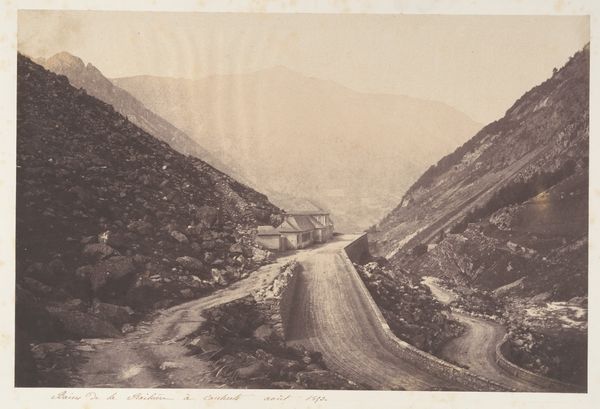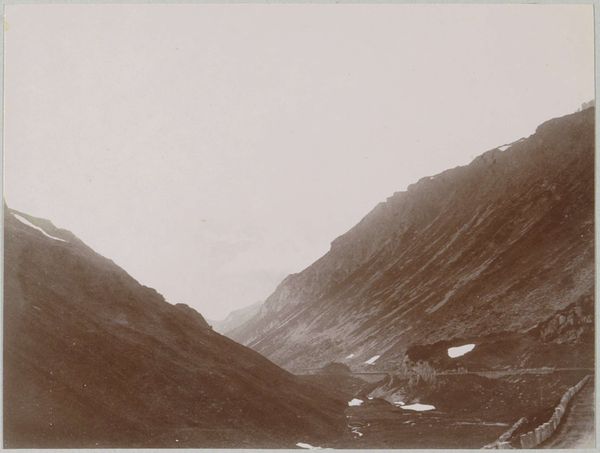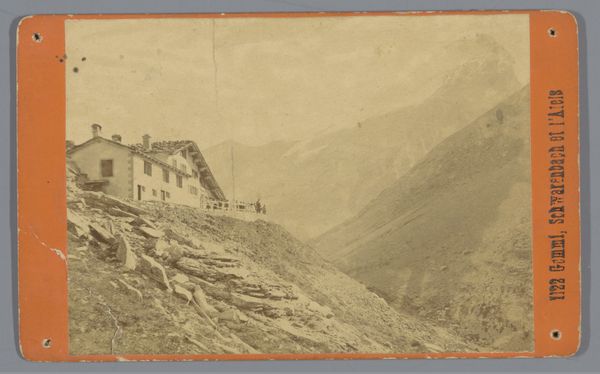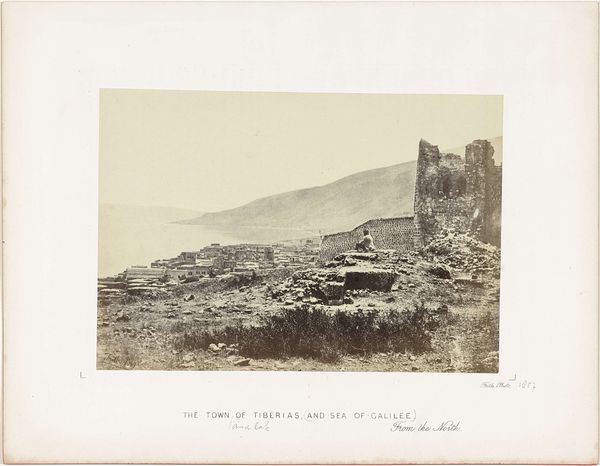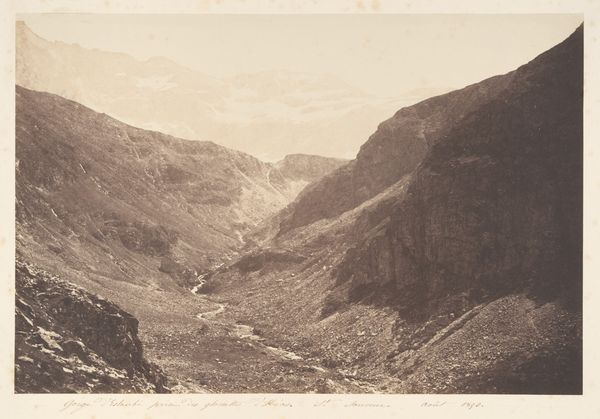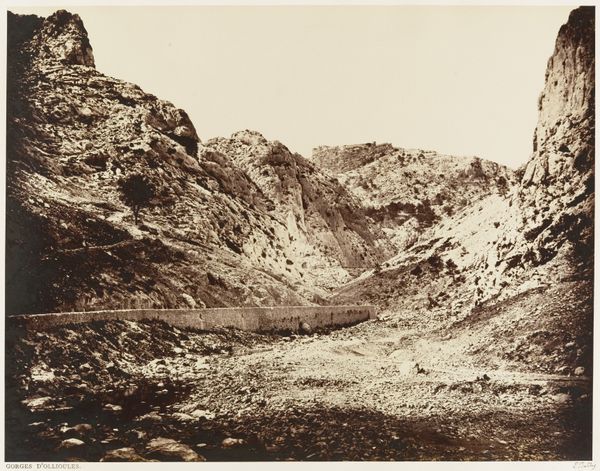
Dimensions: Image: 9 5/8 × 14 9/16 in. (24.4 × 37 cm) Sheet: 12 in. × 18 9/16 in. (30.5 × 47.2 cm)
Copyright: Public Domain
Editor: This is “Vallée de Bosost prise de la capilla San Antonio,” a gelatin silver print from 1853 by Joseph Vigier. It depicts a valley scene from a high vantage point, focusing on a small chapel nestled on a hillside. I find the photograph evocative but also stark – almost like a document of a particular time and place. What’s your interpretation of this work? Curator: Thank you for the wonderful introduction. Looking at Vigier’s photograph, I see more than just a pretty landscape. Consider the historical context: mid-19th century France. Photography was still a relatively new medium, often employed to document and categorize the world. Think about colonialism. Who gets to decide what is 'beautiful' and worthy of preservation through images? Whose stories remain unseen, obscured by idealized representations? How do you see that power at play in this image? Editor: That's a very interesting point. I hadn’t really thought about it in terms of power. So, are you suggesting that even in a landscape image like this, there's a certain imposition of the photographer's gaze and perspective? Curator: Absolutely! Think about the accessibility, or lack thereof, for those living in the region during that time, compared to the privileged tourist's ability to simply capture and consume their home. And what is presented for viewing…a romanticized chapel overlooking, and thus perhaps ignoring the daily struggles of rural existence. These "romantic" landscapes served a very specific purpose for the ruling class. How does this recontextualize the image for you? Editor: It certainly makes me consider it with much more criticality. The photograph suddenly seems less benign and more indicative of a specific social perspective. Curator: Precisely. Seeing art through this lens of power dynamics can unlock complex and meaningful understandings. Editor: I definitely have a new way of seeing landscapes now. Thanks so much. Curator: My pleasure. Never stop questioning the frame, and who’s holding the camera.
Comments
No comments
Be the first to comment and join the conversation on the ultimate creative platform.
